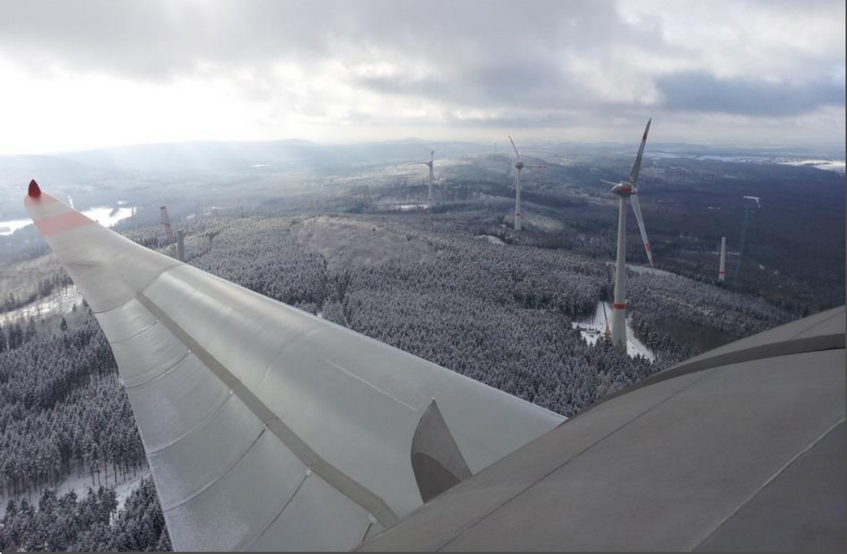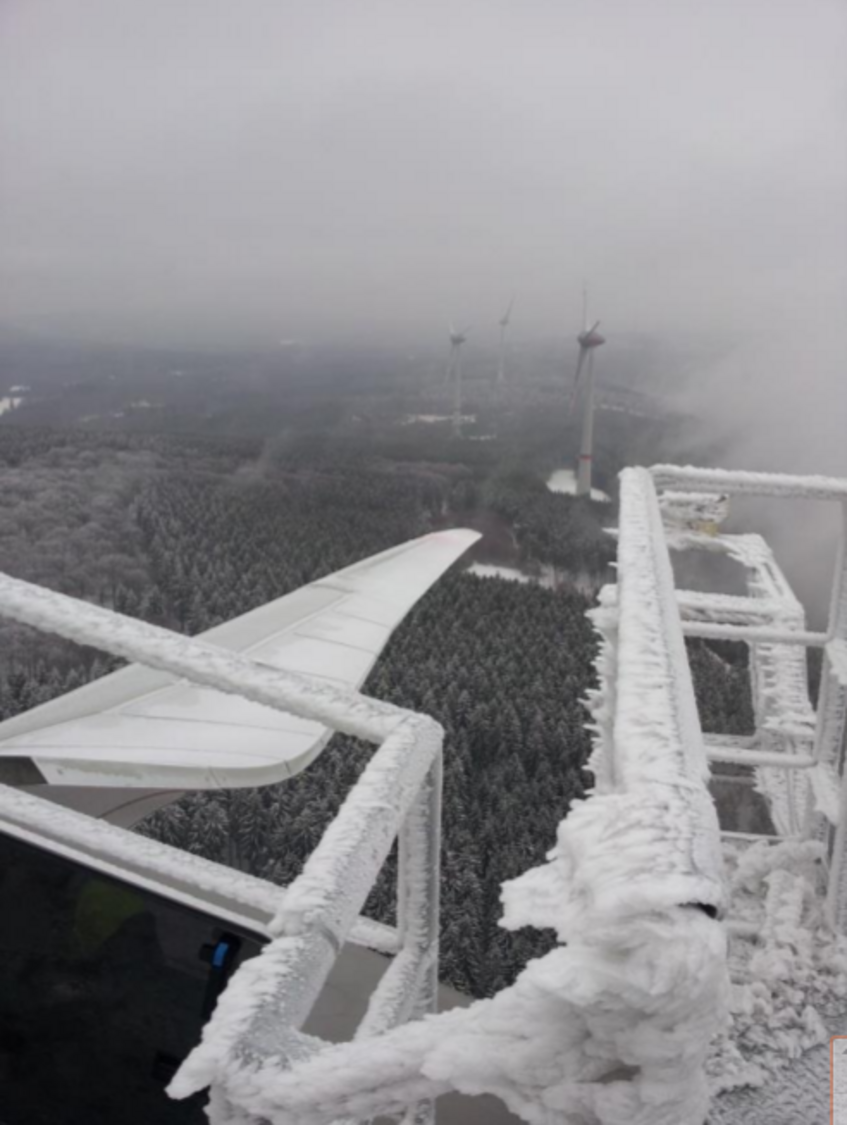
Fig. 1: Picture of a rotor blade and surrounding wind turbines in VERBUND windpark Ellern, Rhineland-Palatinate, Germany. (© VERBUND (Fink))

Fig. 2: A case of severe icing at the rotor blade and turbine hub from one of the past winters. (© VERBUND (Fink))
The icing problem and project goals
Icing events at wind turbines in medium and high mountain areas (600-1500m altitude) cause unplanned downtimes and consequently severe balancing energy costs during winter time. Furthermore inaccurate icing forecasts lead to increased energy yield losses, additional costs due to unnecessary blade heating and additional personnel costs for starting the blade heating and for restarting the wind turbines. The expansion of wind turbines in medium and high altitude regions in Austria will increase the need for precise icing forecasts. The project ICE CONTROL aims at achieving a measureable improvement of icing forecasts with respect to current standard.
Numerical weather prediction, on-site measurements, and verification
Icing forecasts are produced by a model chain consisting of a meteorological model and an icing model and are applied to the rotor blade. Each element of the model chain is affected by large uncertainty. During the project, the total level of uncertainty will be quantified by using an ensemble approach, producing probabilistic forecasts. The latter will represent the major innovative contribution of the project and will generate added value for an optimized operational management of wind turbines. Meteorological model ensembles will be produced by varying the input data and the turbulence and microphysics parametrization schemes. These ensembles will serve as input data for the selected icing models. Specific measurement campaigns will be conducted to collect icing data from a wind turbine useful for model validation and forecast verification. The concept and selection of the measurement equipment will be based on results of an ongoing study at VGB PowerTech e.V. (European technical association for power and heat generation).
